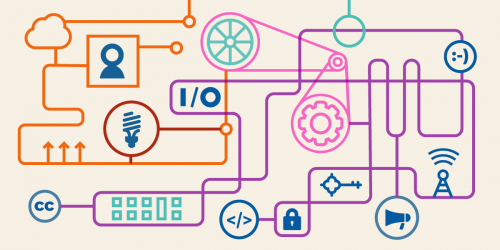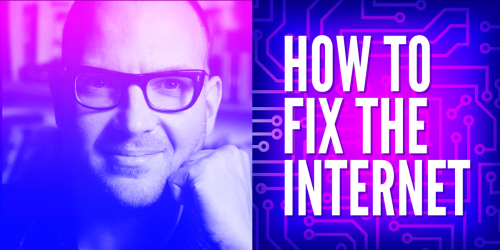Frontier’s bankruptcy has serious consequences for Americans, including 2 million Californians, who are stuck with their deteriorating DSL monopoly. After deciding for years to never upgrade their networks to fiber—despite the fact that, according to their own bankruptcy filing, they could have profitably upgraded 3 million customers to gigabit fiber already—the pyramid scheme of milking dying DSL assets caught up to the company. This has forced rural communities in California that either lack access to the Internet, or have been dependent on decaying copper DSL lines provided by Frontier Communications, into a serious predicament. The solution, of course, is for the state to build fiber in those markets by empowering local governments and small private ISPs to do the job Frontier neglected for so long.
But, rather than leave this mega-corporation to its own demise and chart out a better future for Californians, a bill introduced by Assembly Member Aguiar-Curry, A.B. 570, proposes to amend the state’s Internet infrastructure program to prioritize DSL upgrades over fiber.
CA: Tell Your Lawmakers to Oppose Anti-Rural Fiber Legislation
How A.B. 570 Builds Slow DSL Networks Instead of Fiber Networks
The bill establishes a criteria where the state must prioritize “cost-effective” deployment of broadband at the woefully out-of-date speed of 25/3 mbps. The biggest beneficiary from such a standard is the now bankrupt Frontier Communications, because it has existing copper assets in the ground that can be incrementally upgraded to deliver 25/3—which would be the cheapest way to deliver 25/3 broadband. This upgrade effort would be financed by a tax that Californians pay into a telecom fund. And, because slow networks are dead on arrival for private investors today, it will have to rely 100% on taxpayer money in order for the corporation to shift the entire loss off its books.
As we noted about the current state law, California’s Advanced Services Fund (CASF) considers markets where 1990s-era DSL delivering 6 megabits per second download and 1 megabits per second upload to be “served,” and establishes a low minimum for eligible projects that are achievable with DSL. Today’s law already leaves more than 1 million Californians who do not have broadband off the table for state support because they are stuck with Frontier’s slow DSL, or slow wireless networks. This makes it very hard for anyone else to build fiber networks in rural markets to solve the problem for everyone. With this kind of definition, it's not possible to leverage whole communities to build these networks—only the edges of those communities.
A.B. 570 arguably makes things worse, by complicating the means of assessing “unserved.” In general, the 6/1 metric remains (with minor caveats to raise it to 25/3), which still makes a wide range of territory ineligible for a fiber upgrade so long as copper DSL networks are in the ground. That still excludes more than 1 million Californians from state support. This approach of helping fewer and fewer people with slower networks is bad policy, and contradicts the long-held belief in telecom policy that all people are entitled to equivalent services.
Ultimately, you could not find a more wasteful means of spending scarce government money on broadband than prioritizing slow DSL upgrades over copper lines. This is especially true in the midst of a pandemic, when everyone needs substantially higher capacity networks. Those copper wires will never transition into the high-speed era and need to be replaced by fiber. There is no short cut around that fact. This is why no private corporation would willingly invest new private dollars into that type of construction. Slow DSL is rapidly approaching obsolescence. If A.B. 570’s goals of building ubiquitous 25/3 DSL connections were law, the state will have nothing to show for it in just a few years. And it will cost the state a lot more in the long run to actually deliver people infrastructure that is ready for the 21st-century economy.
There is No Future in Slow Networks and Nothing to Gain from Building Them Out
Were this bill designed around financing future-proofed fiber infrastructure, it would be designed around permanently solving the problem of the digital divide and written to ensure that people can enjoy networks that improve with advancements in hardware—without needing more government money.
But this legislation stands for the proposition that where you live in the state should mean that you have inferior access to the Internet as state policy. Every Californian who wants a 21st-century ready access point to the Internet who believes their neighbors are entitled to that kind of connection, should reject this premise. What people need are fiber infrastructure plans such as the one envisioned in S.B. 1130, the recently introduced universal fiber infrastructure plan introduced in the House of Representatives by Majority Whip Clyburn, and the FCC’s Rural Development Opportunity Fund plan to finance gigabit networks. Fiber networks will keep up with advancements in applications and services for decades while legacy networks have reached their end and will not continue to increase in capacity to deliver data.
If A.B. 570 were to become law at the end of the year, all it would do is perpetuate the suffering caused by the digital divide by replacing it with a “speed chasm”— where rural Californians have expensive obsolete networks delivering 25/3, while urban Californians have networks delivering more than 400 times the download speeds and 3,333 times the upload speeds. Already, the data shows that the average North American city today enjoys broadband speeds in excess of 250/250 mbps . Such a cliff will only grow in the absence of a fiber infrastructure program for rural markets.
If we are going to spend taxpayer money building broadband infrastructure, it needs to be done right the first time or we will never solve the problem while asking taxpayers to shell out more and more of their limited money.










